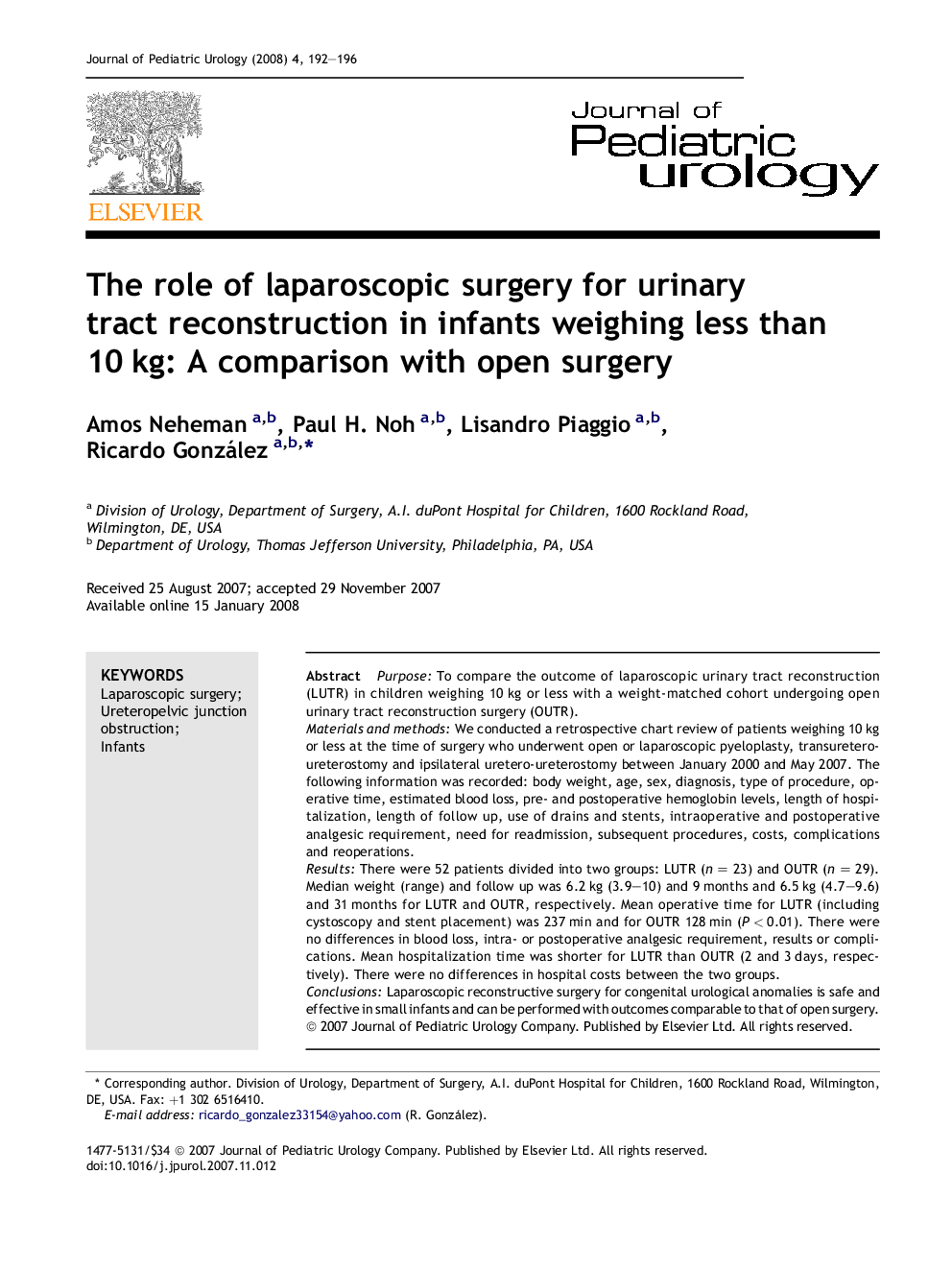| Article ID | Journal | Published Year | Pages | File Type |
|---|---|---|---|---|
| 4164039 | Journal of Pediatric Urology | 2008 | 5 Pages |
PurposeTo compare the outcome of laparoscopic urinary tract reconstruction (LUTR) in children weighing 10 kg or less with a weight-matched cohort undergoing open urinary tract reconstruction surgery (OUTR).Materials and methodsWe conducted a retrospective chart review of patients weighing 10 kg or less at the time of surgery who underwent open or laparoscopic pyeloplasty, transuretero-ureterostomy and ipsilateral uretero-ureterostomy between January 2000 and May 2007. The following information was recorded: body weight, age, sex, diagnosis, type of procedure, operative time, estimated blood loss, pre- and postoperative hemoglobin levels, length of hospitalization, length of follow up, use of drains and stents, intraoperative and postoperative analgesic requirement, need for readmission, subsequent procedures, costs, complications and reoperations.ResultsThere were 52 patients divided into two groups: LUTR (n = 23) and OUTR (n = 29). Median weight (range) and follow up was 6.2 kg (3.9–10) and 9 months and 6.5 kg (4.7–9.6) and 31 months for LUTR and OUTR, respectively. Mean operative time for LUTR (including cystoscopy and stent placement) was 237 min and for OUTR 128 min (P < 0.01). There were no differences in blood loss, intra- or postoperative analgesic requirement, results or complications. Mean hospitalization time was shorter for LUTR than OUTR (2 and 3 days, respectively). There were no differences in hospital costs between the two groups.ConclusionsLaparoscopic reconstructive surgery for congenital urological anomalies is safe and effective in small infants and can be performed with outcomes comparable to that of open surgery.
